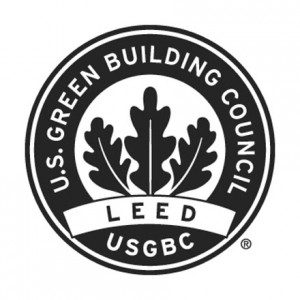
LEED, or Leadership in Energy and Environmental Design, certification provides independent, third-party verification that a building, home or community was designed and built using strategies aimed at achieving high performance in key areas of human and environmental health: sustainable site development, water savings, energy efficiency, materials selection and indoor environmental quality.
In the process, LEED is redefining the way we think about the places where we live, work and learn. As an internationally recognized mark of excellence, LEED provides building owners and operators with a framework for identifying and implementing practical and measurable green building design, construction, operations and maintenance solutions.
With nearly 9 billion square feet of building space participating in the suite of rating systems and 1.6 million feet certifying per day around the world, LEED is transforming the way built environments are designed, constructed, and operated — from individual buildings and homes, to entire neighborhoods and communities. Comprehensive and flexible, LEED works throughout a building’s life cycle.
Developed by the U.S. Green Building Council (USGBC) in 2000, the LEED rating systems are developed through an open, consensus-based process led by LEED committees. The next update of the LEED rating system, coined LEED 2012, is the next step in the continuous improvement process and on-going development cycle of LEED.